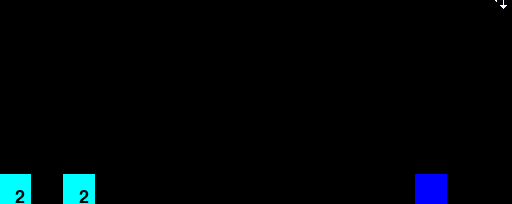Machine Learning (Definition)
Parenthetical Definition
Machine Learning (the field of study of creating algorithms without providing explicit instructions), is the topic of this definition.
Sentence Definition
Machine Learning is used as an umbrella term to describe several statistical and mathematical models developed from 1959 onward, used in applications such as the prediction of outcomes, anomaly detection, and pattern recognition in images, by leveraging the processing power of computers and abundance of data.
Expanded Definition
The term “Machine Learning” is commonly attributed to Arthur Samuel, an American pioneer in the field artificial intelligence (AI). His team at IBM theorized that it may be possible for computers to learn how to perform tasks without explicit human instructions. Machine learning refers precisely to this field of scientific study, in which algorithms or statistical models are applied to data in order to make predictions or decisions in a wide variety of applications. Machine learning returned to popularity as computers developed and were able to perform computations faster: algorithm performance typically scales with the complexity and the number of computations required.
Machine Learning aims to solve complex problems where traditional approaches requiring precise definitions of the problem fail. Beating humans at games such as Go and Poker, recognizing faces and vehicles in images, and detecting email spam are some of the problems where neural networks outperform all other approaches. The main distinction between machine learning and other models is that machine learning can leverage large quantities of data and very loosely-defined problems.
Modern machine learning approaches can be grouped into three categories: Structured Prediction, Unsupervised Learning, and Reinforcement Learning.
- Structured Prediction or Supervised Learning applies machine learning techniques, usually neural networks, to try to predict a certain class or structure of an object. For example, differentiating between “dog” and “cat” on pictures of dogs and cats. During the application of this technique on data, the answer is known, and the algorithm can be adjusted on erroneous predictions. For instance, if the machine learning model predicts “dog” when it is shown a cat picture, it can be penalized or adjusted to predict cat more often next time a similar picture is shown. These techniques require thousands, millions, or sometimes billions of data samples in order to reach their maximum performance, which may often not be available. However, recent research has shown that transfer learning could be used to reduce the amount of samples required. Transfer learning takes an algorithm already good at solving one task, and simply continues to train it on a new task, building on the old “knowledge”.
- Unsupervised Learning is a subcategory of machine learning dealing with instances where the correct solution to a problem is not known beforehand. Applications such as clustering (grouping things into category by similarity), anomaly detection (such as credit card fraud), and several neural network (a class of algorithms inspired by the human brain) designs fall into this category.
- Reinforcement Learning techniques typically involve randomly initializing a machine learning model and “reinforcing” positive and negative performance by applying a reward function. Sometimes algorithms can be placed into a competitive environment and even made to compete against copies of themselves. For example, AlphaGo, the AI from Google that beats top humans at Go, played thousands of matches against incrementally more experienced versions of itself until it reached proficiency. This method has also been used at factories to maximize production while minimizing costs (e.g. energy consumption). Figure 1 shows an example of a reinforcement learning environment, in which the cyan agents have to stack the blue tower. They choose between moving and building. After 500 attempts with random actions, the agents have learned the optimized policy, which is to move until they reach the tower, then build.

Figure 1. Two Reinforcement Learning Agents that “Learned” to Build a Tower. September 12, 2019
Sources
[1] Bishop, Christopher M. Pattern Recognition and Machine Learning. Springer, 2013.
[2] Sutton, Richard S., and Andrew G. Barto. Reinforcement Learning: an Introduction. The MIT Press, 2018.
[3] Wiederhold, Gio, et al. “Professor Arthur Samuel.” Professor Arthur Samuel | Stanford Computer Science, cs.stanford.edu/memoriam/professor-arthur-samuel.
Leave a Reply